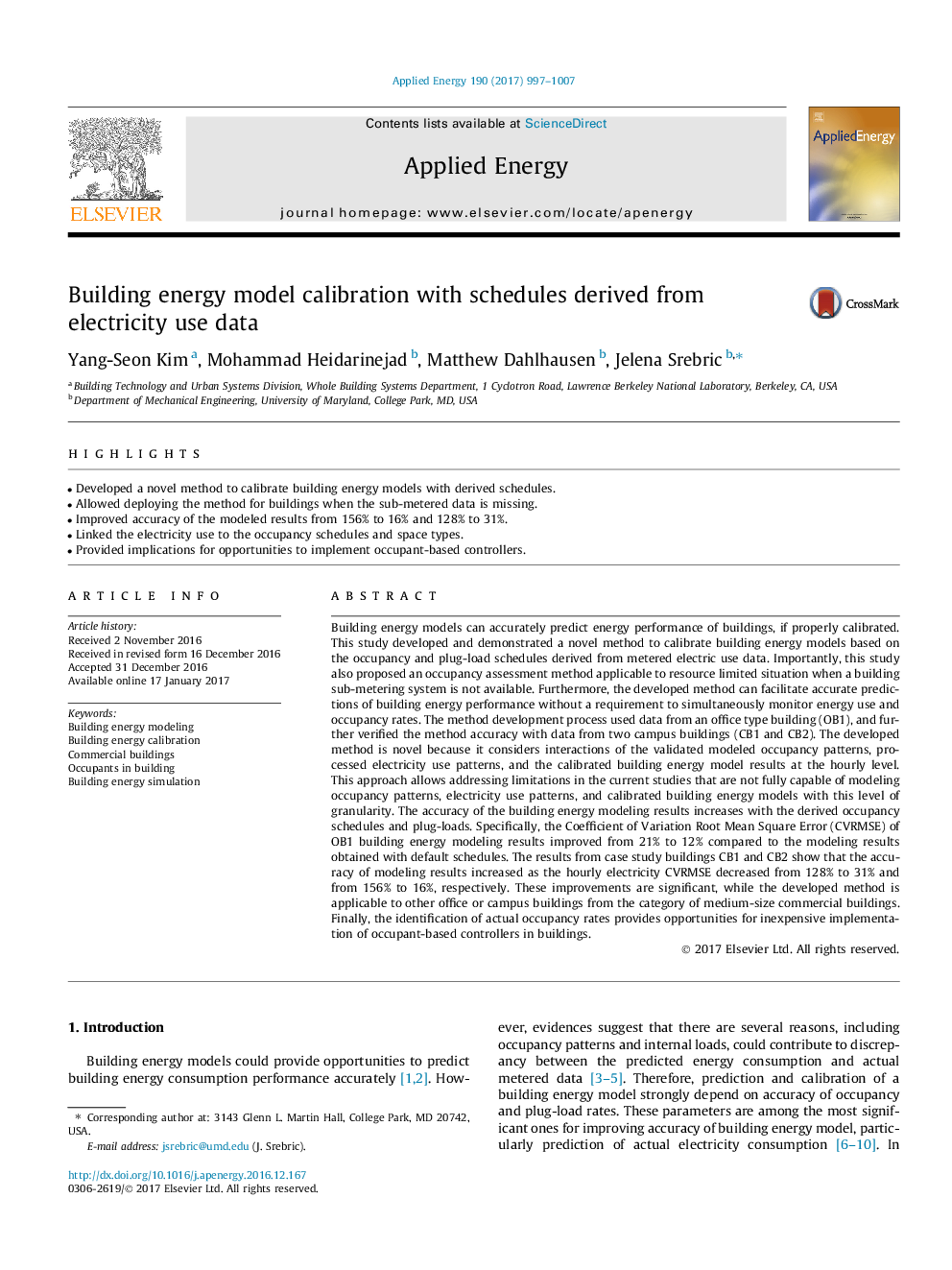| کد مقاله | کد نشریه | سال انتشار | مقاله انگلیسی | نسخه تمام متن |
|---|---|---|---|---|
| 6478654 | 1428100 | 2017 | 11 صفحه PDF | دانلود رایگان |
• Developed a novel method to calibrate building energy models with derived schedules.
• Allowed deploying the method for buildings when the sub-metered data is missing.
• Improved accuracy of the modeled results from 156% to 16% and 128% to 31%.
• Linked the electricity use to the occupancy schedules and space types.
• Provided implications for opportunities to implement occupant-based controllers.
Building energy models can accurately predict energy performance of buildings, if properly calibrated. This study developed and demonstrated a novel method to calibrate building energy models based on the occupancy and plug-load schedules derived from metered electric use data. Importantly, this study also proposed an occupancy assessment method applicable to resource limited situation when a building sub-metering system is not available. Furthermore, the developed method can facilitate accurate predictions of building energy performance without a requirement to simultaneously monitor energy use and occupancy rates. The method development process used data from an office type building (OB1), and further verified the method accuracy with data from two campus buildings (CB1 and CB2). The developed method is novel because it considers interactions of the validated modeled occupancy patterns, processed electricity use patterns, and the calibrated building energy model results at the hourly level. This approach allows addressing limitations in the current studies that are not fully capable of modeling occupancy patterns, electricity use patterns, and calibrated building energy models with this level of granularity. The accuracy of the building energy modeling results increases with the derived occupancy schedules and plug-loads. Specifically, the Coefficient of Variation Root Mean Square Error (CVRMSE) of OB1 building energy modeling results improved from 21% to 12% compared to the modeling results obtained with default schedules. The results from case study buildings CB1 and CB2 show that the accuracy of modeling results increased as the hourly electricity CVRMSE decreased from 128% to 31% and from 156% to 16%, respectively. These improvements are significant, while the developed method is applicable to other office or campus buildings from the category of medium-size commercial buildings. Finally, the identification of actual occupancy rates provides opportunities for inexpensive implementation of occupant-based controllers in buildings.
Journal: Applied Energy - Volume 190, 15 March 2017, Pages 997–1007
